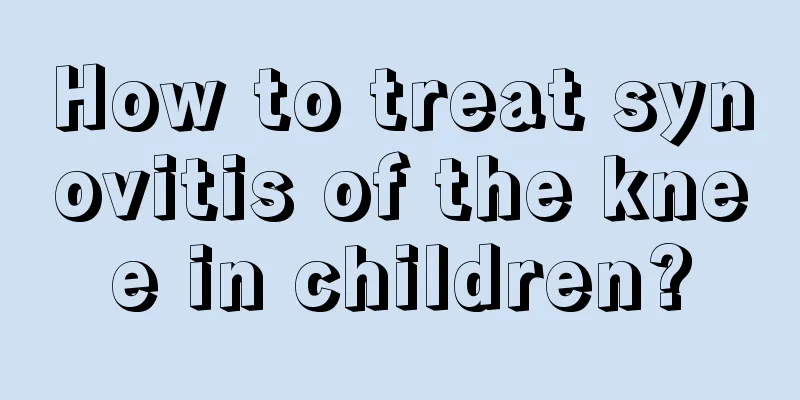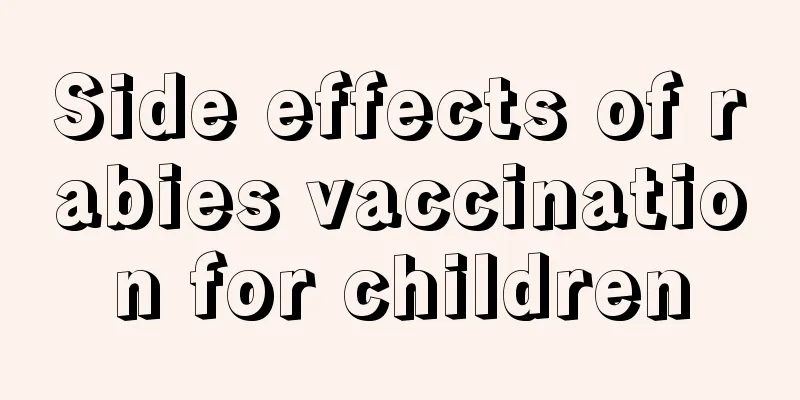What is the reason for children's heavy sweat hair

|
There is a lot of hair on the human body, but it has gradually formed its current appearance during the long process of evolution. When a newborn is born, there is a layer of fluff on its body. Many parents feel that their children have more hair on their bodies, but they don’t know why. They are worried whether there is something wrong with the child and whether it will affect their health. If you want to understand the reasons why your baby has heavy hair, the following is an introduction for you. 1. Reasons for heavy sweat hair in newborns Babies are born with varying amounts of hair, which is called "lanugo". Some babies have soft hair only on their heads, while others have coarse hair covering their shoulders and spine. After the fetus is born, there will be a natural layer of protective lanugo on its body. This is a normal physiological phenomenon. It is a layer used to protect the fetus's body after birth. Generally, as the child is born and grows, this layer of lanugo will disappear naturally and will not remain on the child's body for a long time. However, if your baby is already six months old and the lanugo has not disappeared but has grown darker, you need to have a check-up. Generally, if a child still has a lot of hair after he or she is six months old, it may be due to problems with the child's endocrine system or blockage of the child's hair follicles. If there is a problem with the child's endocrine system, the nutrition of the fetal hair will continue to be insufficient and cannot be cut off, resulting in the fetal hair not decreasing but increasing in thickness. If the hair follicles are blocked, the hair cannot absorb the necessary nutrients, causing it to not change color or not return to its normal state, resulting in thick hair. 2. What to do if the newborn has heavy sweat hair 1. Take your child to bask in the sun. Under the stimulation of sunlight, the child's skin will grow faster and he will feel the breath of life. While promoting blood circulation, the lanugo will disappear naturally. 2. Give your baby some extra nutrition to speed up his or her development. You can let your child eat some cod liver oil appropriately, which is also very effective in helping to reduce the impact of lanugo on the child's skin surface. 3. Enhancing your own immunity will also effectively help reduce the layer of fetal hair on the surface of the skin. 4. Eat more seasonal vegetables and fruits, and don’t eat too many out-of-season foods. These foods contain a lot of catalysts. If you eat them for a long time, your body hair will grow heavier and heavier. 5. Don’t put makeup on your children. Some cosmetics contain lead, mercury and skin hormones. They may work very well at first and the results are quite quick, but over time, the skin will become dependent on the hormones. Once they are not used, the skin will rebound or even deteriorate, and the hair will grow more and denser. 3. What should adults do if they have heavy body hair? 1. Electrotherapy This method can achieve the purpose of permanent hair removal. The principle is to use electric needles to pierce the hair follicles and destroy the hair papilla. It is suitable for coarser and harder hair. Because it can only be effective if the needle hits the hair follicles, especially around the hair bulb, the success depends on the operator's skill level. 2. Clip beeswax This is also a method that many girls like to use. Whether it is using tweezers or wax to remove hair, it is very painful and not thorough. The hair will grow again after pulling it out, and it is easy to cause symptoms such as inflammation of the pores. But the advantage is that you can do it at home at any time, which is convenient and has little cost. 3. Hair removal cream Depilatory creams are relatively inexpensive, can be used at home, and are less painful than other methods such as clipping and waxing. 4. Laser Hair Removal Initially, laser hair removal was more suitable for people with light skin and dark hair, but it might cause pigmentation on darker skin tones. Recently, selective thermodynamic hair removal lasers have emerged that can set safe and effective light wavelengths and energies based on the patient's skin characteristics, hair characteristics, and hair removal areas to track dark-brown hair follicles and vaporize the hair papilla to achieve permanent hair removal. |
<<: The dangers of skin grafting in children
>>: What are the medicines for clearing heat and purging fire in children?
Recommend
One and a half year old baby diet
Babies can eat some food when they are about one ...
Children's cough first produces phlegm and then turns into dry cough
Coughing is a very common lung disease in childre...
How to prevent and treat asthma in children?
Spring is a great season when flowers bloom, but ...
What are the red spots around my baby's eyes?
Generally speaking, any small symptoms that appea...
What are the dangers of picky eating in babies? Are there any ways to solve it?
I believe everyone is familiar with the term &quo...
Two-year-old children with autism
Autism is a common disease, and the incidence rat...
What to do if a two-year-old child has a fever and vomits
Living conditions are better now and the economy ...
What to do if your 4-year-old child drools
Children may develop various bad habits. Recently...
What to do if your child has red spots on his tongue
What should I do if my child has red spots on his...
How to treat sinusitis in a four-year-old baby?
Clinically, many diseases are not age-specific, r...
How to treat night terrors in children
Some places in our country are very superstitious...
How to treat amblyopia in children and what should we pay attention to?
Nowadays, many children suffer from eye diseases,...
Dietary treatment for allergic cough in children, young parents please remember this!
If a child has an allergic cough and this symptom...
What are the methods of disinfection for hand, foot and mouth disease?
Hand, foot and mouth disease is a common disease ...
What is the best way to treat cerebral palsy in children?
Cerebral palsy is a common disease in children. I...









